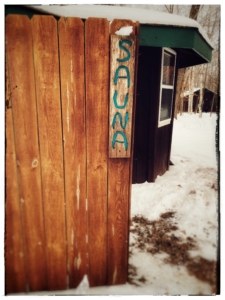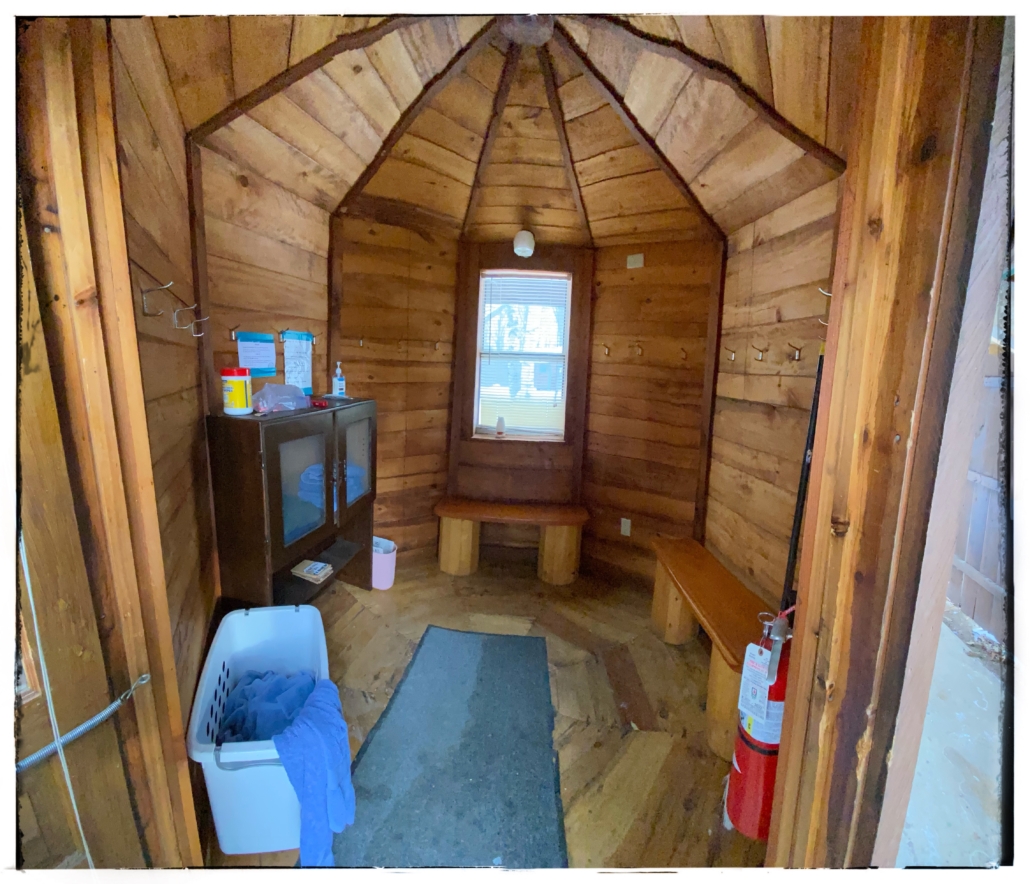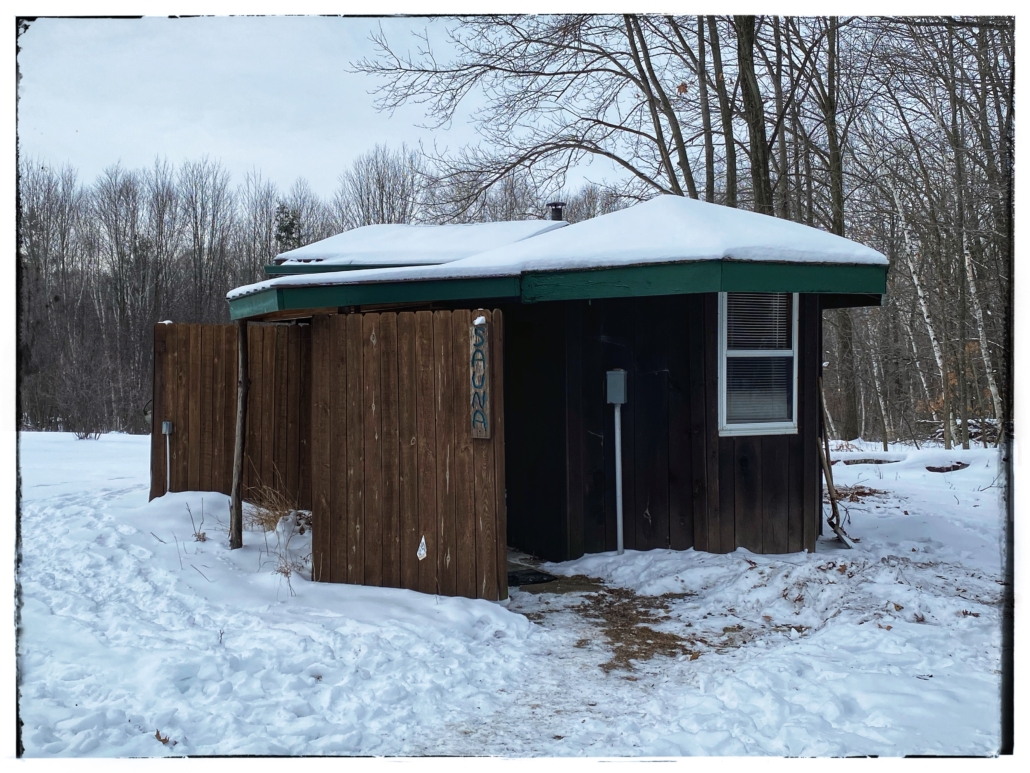I recently had my first traditional sauna experience.
I spent four days in early January on retreat at The Christine Center in Willard, WI. On-site is a simple structure created for a wood-fired sauna. Once the fire is built, it takes about 40 minutes for the sauna to heat up. A simple metal bucket with a ladle straight out of a spaghetti western are used to add water to heated rocks on top of the stove to create steam. This is done manually every 10 minutes or so. There is no electricity in the building. Tea lights provide a glow in the small, cedar-lined space. A simple slated bench is present on 2 walls opposite the stove.
There is a small, unheated building next to the sauna for people to change, leave their coats and boots, and grab a towel for the sauna. The space between these two buildings is fenced for privacy. Extra wood is stored inside the fence.
ABOVE: The room used for dressing and coat/boot storage before using the sauna.
RIGHT: The sauna. A simple room that gets really, really hot.
I was invited to sauna with 4 other women on retreat at the center. I was in a hotel sauna in Ireland and once at a fitness center, but never like this. This sauna was not designed to just sweat in. It was designed for fellowship, reflection, and purification. I was excited about this experience.
Saunas date back as far as 7,000BC. Sauna is also the only word in the English language with Finish roots. Many countries, including Estonia, Latvia, Russia, and Finland include sauna as an essential part of their culture, centering life experiences and rights of passage around the sauna. These countries all experience harsh winters, and the sauna allowed their inhabitants to survive in inhospitable conditions. The first saunas were man-made caves draped in animals furs. A fire was lit in the sauna under stones, warming them. The fire was extinguished after the rocks were heated, and the smoke cleared from the space. People would then huddle in the room, warmed by the hot stones. Over time, the sauna took on the more modern-day look we are familiar with. Saunas are typically kept between 150 and 195 degrees F (65-90 degrees C). Saunas can be dry heat or steam. For example, Finnish saunas tend to have dry heat, while Turkish saunas are steamier. They have been used by cultures from Africa, Europe, Asia, and the Americas for cooking, medicinal practices, purification, and spiritual quests.
One of the women in the group was visiting from Finland, and we talked about the role of sauna in Finnish culture. The population of Finland is about 5 million; however, there are 3 million saunas, more than the total number of cars in the country. She said the sauna is often the first structure built by a family. Traditionally, babies were born, and bodies were prepared for burial in the sauna because it had hot water. Other life celebrations also center around the sauna. She said her family lived in the sauna for a time while they built their home. This was not uncommon in Finland.
The little stove that produces the deep, hot magic of the sauna.
The full sauna complex – changing room, sauna, and fence surrounding the two structures.
I settled myself into enjoying this new experience. The small room was dark, hot, and smoky. I soon discovered that the small sauna filled with smoke whenever the fire was stoked. We had to open the door for a minute to let the smoke clear. The space reheated quickly, and the faint aroma of campfire and cedar soon filled the air. I listened to the other women talk and breathed in the heat. It was 0F outside, but it was a sultry 160 degrees F in our dark little cabin. I let the heat sink into the marrow of my bones. Once I had my fill of the sauna heat, I dashed out into the frigid night and plopped into the snow. It was exhilarating, fun,… and freezing! I quickly returned to the little dressing house, wiped the snow from my body, donned my snow boots and parka, and headed out into the evening refreshed. The sparkling milky way lit my path back to the retreat center through the still white winter night.
It was a beautiful experience and one of the highlights of my retreat. I will be on the lookout for saunas in the future. They warm the body and invigorate the soul, something I crave during the bitter Minnesota winters.
References
Aaland, M. (1997). History of the Finnish Sauna and the Nordic Bath. Finnleo.com. https://www.finnleo.com/hubfs/assets/health-benefits-library/sauna-history-trivia/cyberbohemia.com-History-of-the-Finnish-Sauna-and-the-Nordic-Bath.pdf
Oviir, A. (2018, March 8). Here’s why the history of the sauna is deeper than you might think. Medium. https://medium.com/estoniansaunas/heres-why-the-history-of-the-sauna-is-deeper-than-you-might-think-d8e5127a8232
Saunas.Org Team. (2018, December 1). The History of Saunas. Saunas.Org. https://saunas.org/the-history-of-saunas/






 © Catherine Haslag
© Catherine Haslag © Catherine Haslag
© Catherine Haslag